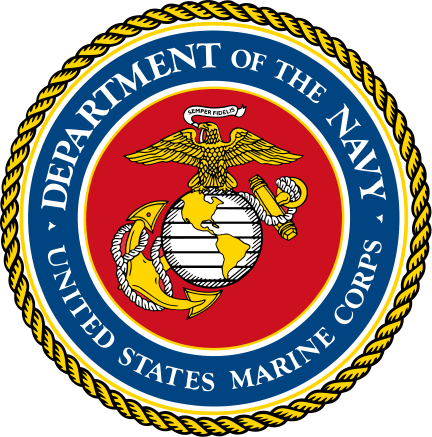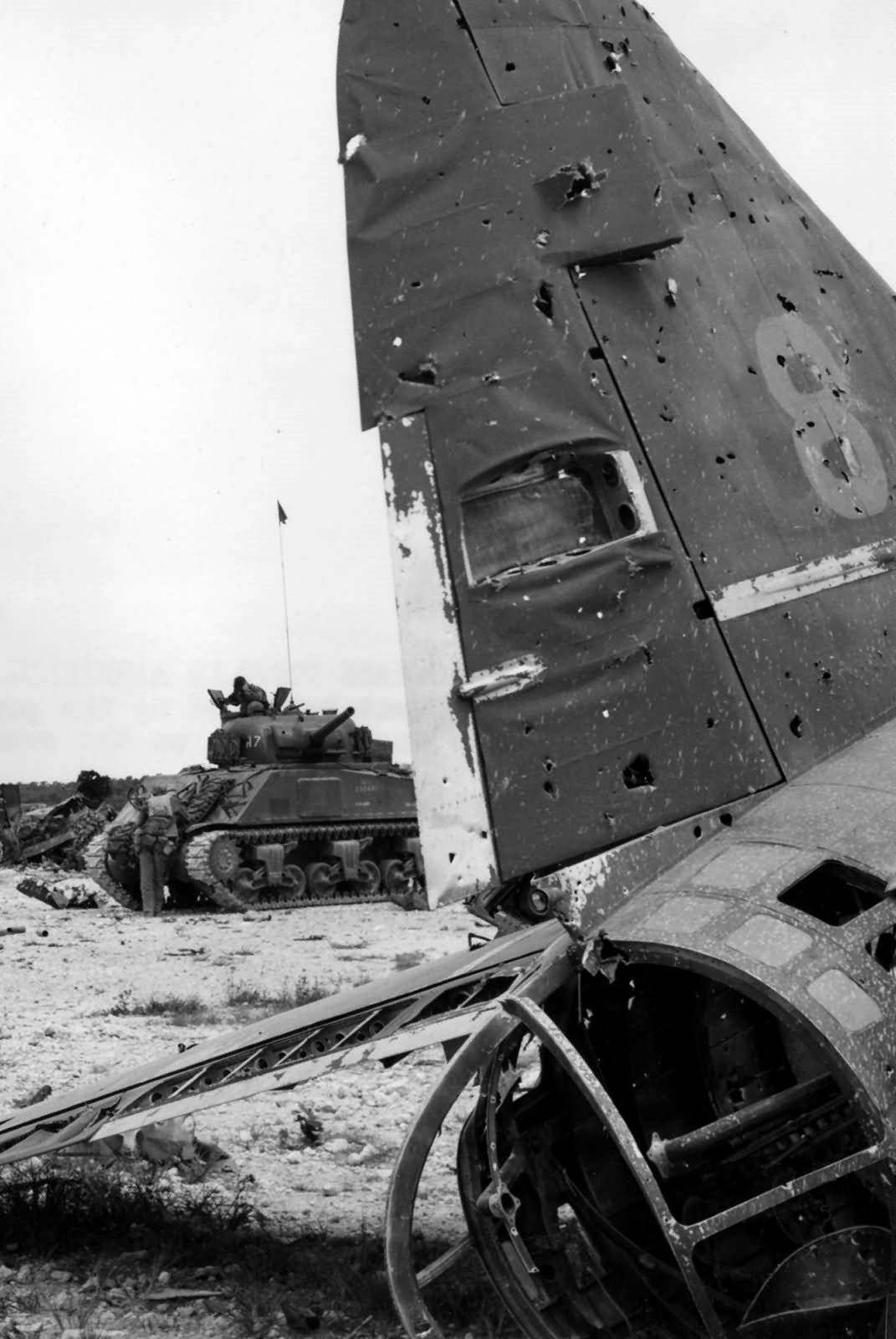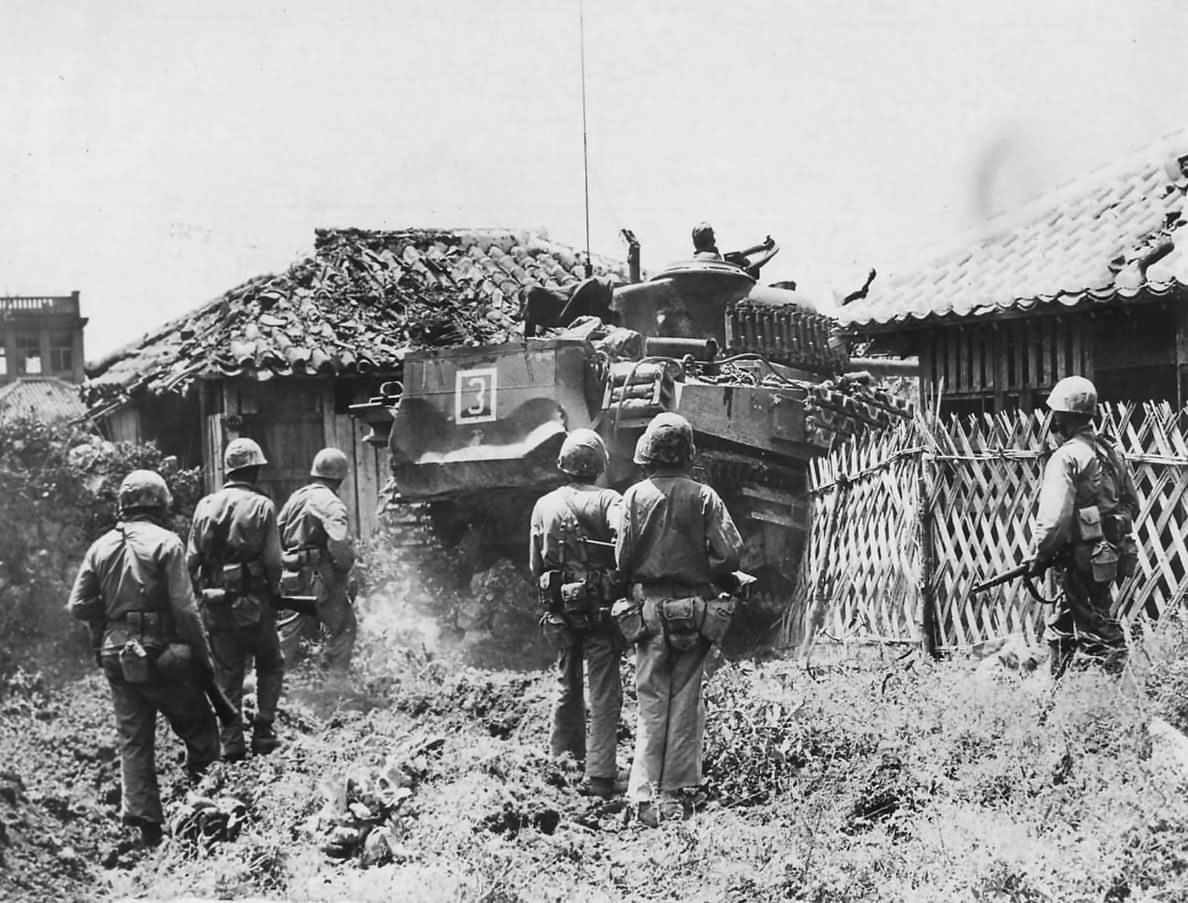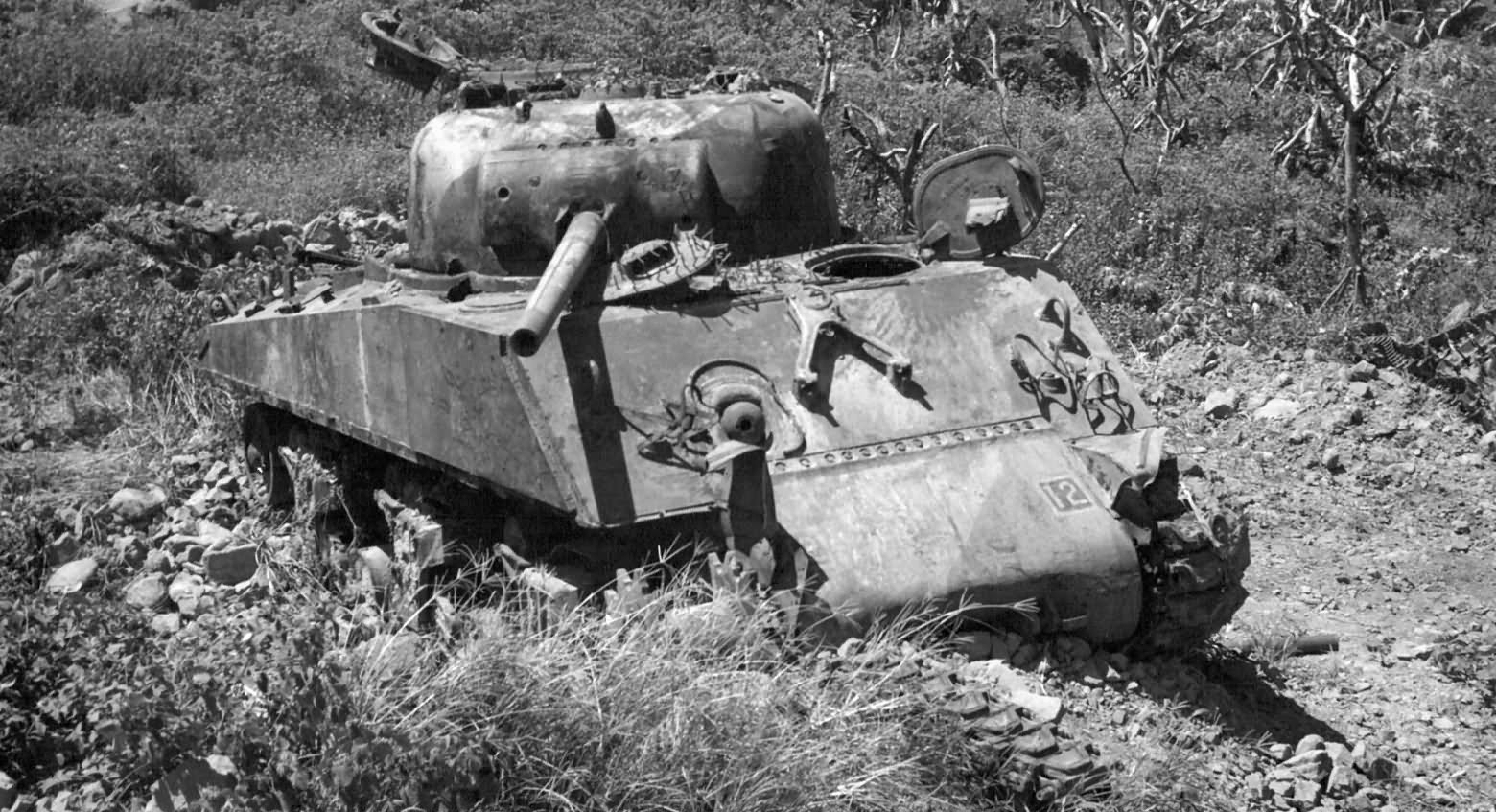Shermans used by the United States Marine Corps: “The enemy’s power lies in his tanks.” – Lieutenant General Mitsuru Ushijima, Okinawa.
Most people have the idea the Marines used the Sherman tank extensively during the war. Through most of the war, they used the M4A2, but the A1 and A3 saw use as well. The reason they got more A2 tanks, was that’s what was available when they asked, there wasn’t much choice involved, and they should feel lucky the army didn’t dump M3 Lee’s on them. The Marines also used M4A1s in one campaign, and M4A3 from Iwo Jima on in increasing numbers, all with the 75mm gun.
By the end of the war, the Marines would be experts in employing the Tank, Infantry, team. The Marines, like their European Army counterparts, used, Yankee ingenuity to modify their Shermans to help them survive combat their designers had no idea they would see. These modifications included improvised waterproofing and deep wading kits. They also included improvised add-on armor made of wood and concrete, and the use of spikes and screens over the hatches to help prevent the Japanese from using explosives directly on the periscope ports and hatches.
The Marines had toyed around with tanks in the 20 and 30s but never had the budget to buy many. The ones they did buy were all light tanks that wouldn’t see combat use. The first tank they would use in combat in WWII was the M3 light, using it on in all major campaigns until 1943 when the Sherman entered the scene. The first combat for the Sherman would be Tarawa, where they used a battalion of tanks that were mixed, two companies of lights, and one of the mediums. After Tarawa, the use of lights would not be fully suspended, but the Sherman would be the tank of choice for the rest of the war and lights would be phased out.
The Marines ultimately ended up with six tank battalions and a training school at Camp Eliot California. The first two battalions formed were the 1st and 2nd and deployed without training at the tank school, and a lot of rejects from other units. After the first two battalions formed, most of the Marines’ tankers went through the school, and the school trained almost all the new NCOs and officers. When the war ended, all but the 1st and 2nd were disbanded, and the 1st and 2nd have remained active since the beginning, and are still in operation today.
When the fighting was over on Okinawa, Major-General Lemuel Shepard, the Marine ground commander had this to say: “If anyone supporting arm can be singled out as having contributed more than any others during the progress of the campaign, the tank would certainly be selected.”
The Sherman would go on serving the Marines in Korea, though by then it was just the M4A3 105 tanks and Sherman based recovery vehicles.




Hi there. I am hoping to reach out into the Marine community and find a usmc ww2 sherman tank expert. I am currently the cheif restoration expert in charge of a ww2 usmc sherman from ww2. We do know the tank definately belongs with the Marines in the Pacific. Unfortunately i only have 1 photo of the tank back on iwo jima. It only has one marking on it. I am hoping to get in touch and perhaps find out more about the unit the tank belonged to and served with so i can accurately paint correct markings around the tank. Any assistance would be greatly appreciated and perhaps an opportunity to drive the tank once finnished. Upon reply i will forward the photos i have. Many thanks. Scott….Las Vegas.
Well I’m in charge of a 1/35 scale big difference lol. I’m glad I found this website, it is really helping me come up with some ideas